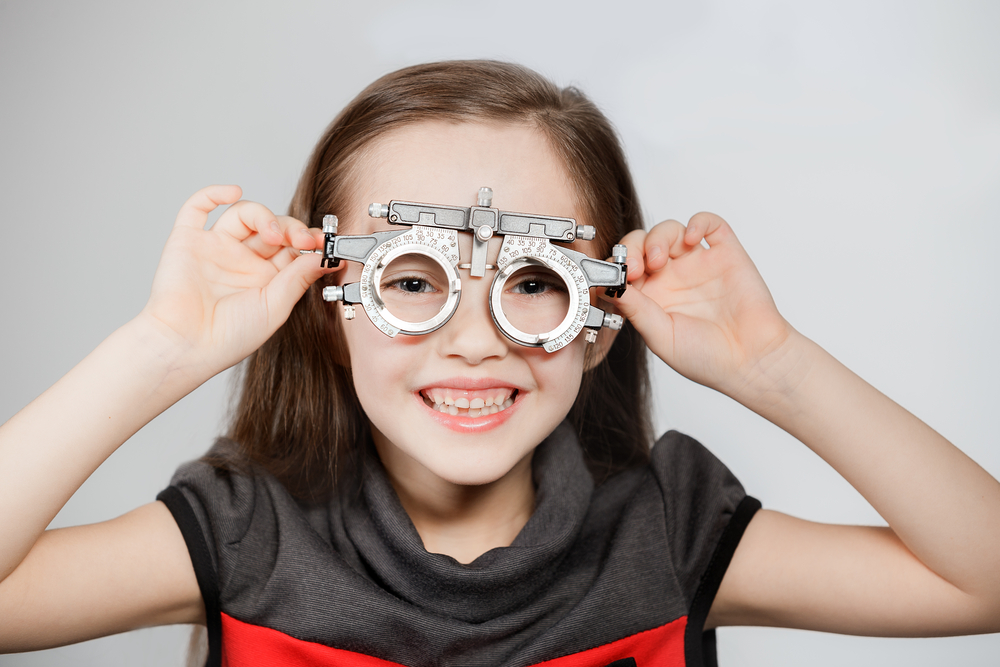Read our Blog

Why Growing Kids Need Regular Eye Exams More Than Ever
As children grow, their vision plays a vital role in learning, development, and social confidence. With increased screen time, demanding school environments, and rapid visual changes throughout childhood, routine eye care is more important than ever. At Auglaize Family Eye Care, our eye doctors in Wapakoneta, OH provide comprehensive pediatric eye exams to help ensure your child’s vision stays strong and healthy.

Can Cataracts Develop Faster in One Eye Than the Other?
Cataracts are one of the most common age-related eye conditions, affecting millions of people worldwide. They occur when the clear lens of the eye becomes cloudy, leading to blurred or dim vision. While cataracts often affect both eyes, many patients wonder: can one eye develop cataracts faster than the other?

Digital Eye Strain: How to Protect Your Eyes in a Technology-Driven World
In today’s world, digital devices are an unavoidable part of everyday life. Whether you're working on a computer, scrolling through your phone, or catching up on your favorite shows, chances are you’re spending more time than ever in front of a screen. While this technology offers convenience and connectivity, it also comes with a downside: digital eye strain. Also known as computer vision syndrome, digital eye strain can lead to a variety of uncomfortable symptoms.

Understanding Age-Related Macular Degeneration and Its Treatments
Age-related macular degeneration (AMD) is a leading cause of vision loss among adults over the age of 50. This condition affects the macula, the central part of the retina responsible for sharp, detailed vision. As AMD progresses, it can cause blurred or distorted vision, making daily activities like reading and driving more difficult. While there is no cure for AMD, early detection and treatment can help slow its progression and preserve vision.

The Importance of Cataract Screening and Early Detection
Cataracts are one of the leading causes of vision impairment, particularly as we age. They occur when the natural lens of the eye becomes cloudy, often resulting in blurred vision, sensitivity to light, and difficulty seeing at night. Although cataracts are a common part of the aging process, they don’t have to rob you of your clear vision. Early detection through routine cataract screening plays a critical role in maintaining your eye health and preventing long-term vision loss.

Early Symptoms of Glaucoma: What to Watch For
Glaucoma is one of the leading causes of blindness worldwide, yet it’s often referred to as the “silent thief of sight.” In its early stages, glaucoma can progress without noticeable symptoms. By the time a patient realizes there’s an issue, irreversible vision loss may have already occurred. At Auglaize Family Eye Care, we’re dedicated to helping patients stay informed and vigilant about their eye health. Recognizing the early symptoms of glaucoma is essential for early detection and effective treatment.

Maximizing Performance: The Importance of Sports Vision Testing
As an athlete, you understand the importance of honing your physical skills and pushing your body to its limits. However, have you ever considered the crucial role that your visual abilities play in your overall performance?

Clarity Unveiled: Comprehensive Approaches to Treating Cataracts and Glaucoma
Picture waking up and seeing clearly without glasses or contacts or having to squint to read words on a page. Imagine crisp, sharp vision as soon as you open your eyes. This reality is possible with proper treatment of common eye conditions like cataracts and glaucoma.

A Complete Guide to Selecting the Perfect Contact Lenses
Contact lenses have become a popular alternative to the traditional eyeglasses, offering individuals a convenient way to correct vision issues. They are small, thin discs that sit on the surface of the eye and function to correct a variety of vision problems, including nearsightedness, farsightedness, and astigmatism.

The Benefits of Transition Lenses: Convenience and Eye Health Combined
Transition lenses, also known as photochromic lenses, have been a popular choice for many eyeglass wearers for years. These lenses are designed to automatically darken when exposed to ultraviolet (UV) light and lighten up when indoors or in low-light conditions.








